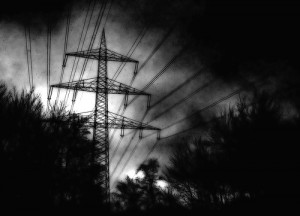
photo credit: SandiaLabs via photopin cc
When people hear the word research many will first think of universities. But there are many other organisations in the public and private sector that contribute to research and innovation. They present different environments and may operate in different ways. My PhD is taking place between two such worlds: one is here, the Energy Research Lab at the University of Reading and the other the National Physical Laboratory (NPL) in Teddington, South West London. Let’s see how these two compare.
As a university, Reading is an independent corporation with charitable status. Its charitable purpose is not only to deliver outstanding research, but also to provide an excellent standard in higher education. Funding stems from a variety of sources, with a significant chunk coming from the government, tuition fees and research grants; Reading also pursues some commercial activities such as research for the private sector.
NPL is the UK’s National Measurement Institute. It was set up and still exists to provide national standards in measurements which benefit the lives of people, businesses and the economy. In practical terms this can mean: delivering methods to accurately measure carbon emissions without which they can’t be traded; determining exact doses of ionising radiation for targeted radiotherapy; or calibrating meters to uniformly calculate electricity consumption.
NPL conducts research, delivering world-leading measurement solutions and working with a focus on applications and impact for industry, but nonetheless striving for scientific excellence. At the moment it is a ‘GOCO’ – Government Owned-Contractor Operated organisation, however, this model is subject to change as it has been decided that in future NPL will be involved in a strategic partnership between the Department for Business, Innovation and Skills (BIS) and one or more universities.
Government funding accounts for about 60% of its income and the rest is generated from other sources such as the EU and commercial activities.
One obvious physical difference lies in the facilities. The university campus is larger and has many more buildings needed to teach and accommodate its 16,000-strong student body. However, at NPL a much larger proportion is made up of state-of-the-art laboratories which are as diverse as the measurement and research activities, ranging from acoustics to optics and electromagnetics to name a few. Whilst Reading is one of many universities in the UK, NPL is unique as it is probably the only facility with purpose-built, specialised laboratories and equipment across such a wide range of fields.
Research is at the core of NPL’s activities and the drivers are applications relevant to the UK’s economy and quality of life. In contrast, at the university there is room to consider a wider set of research questions as long as they contribute to the advancement of science, even without an immediate real-world benefit. However, this difference is not clear-cut. Universities are also looking to secure industry-partnerships and deliver tangible research results. For research students like me and my colleagues in the Energy Research Lab commuting between both worlds opens up challenges and opportunities. We have to deliver on the demands of academic and commercial or applied research. But mastering this balancing act may develop a new species of entrepreneurial scientist with the ability to solve the problems that our ever more complex world is presenting.



